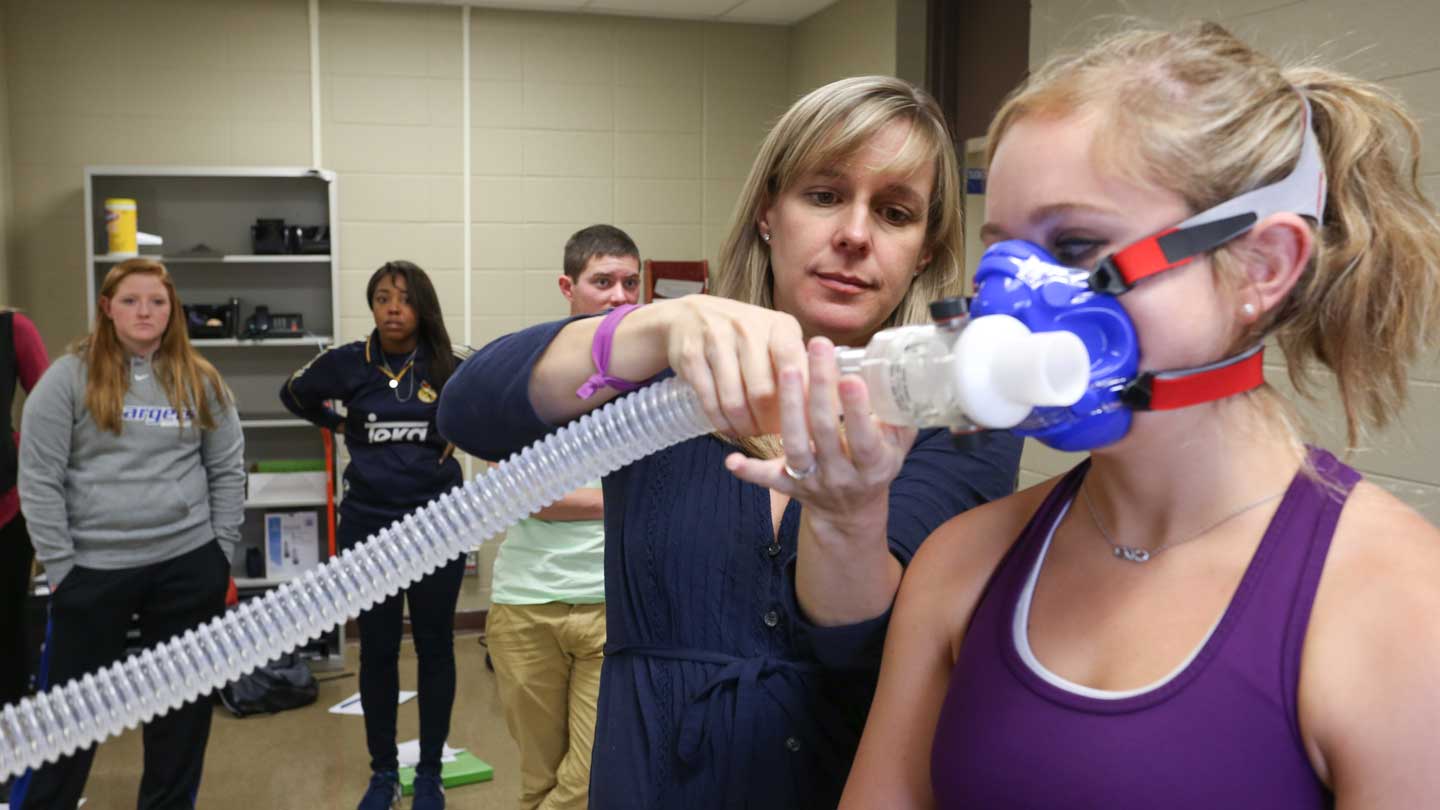When Collaborative Learning Center director Dr. Dan Rochowiak began meeting with faculty members across the campus of The University of Alabama in Huntsville (UAH) to share collaborative learning techniques they could implement in their classrooms, he found an early adopter in Dr. Shannon Mathis, an assistant professor in the College of Education’s Department of Kinesiology.
“It was eye opening,” she says. “After Dan gave us an overview, I did some research on educational strategies that employ group work and came up with a new class lesson on how to write a hypothesis in my Research Methods in Exercise Science course. With the new strategy, the students were much more engaged.”
As Dr. Mathis explains, in the past she would simply use the class time to deliver a lecture about how to write a hypothesis and then task the students with doing so individually. “We might also have had a class discussion,” she says. “But even then, it just seemed to go over their heads.”
With the new lesson, however, the students were grouped into teams of three and asked to conceptualize the solution to an example hypothesis using a four-step collaborative learning process called the “stand, stray, send, and rotate” method:
- Stand involves peer editing. Students were asked to compare their own solutions within each group. One student volunteer stood up to report his or her group findings to the class. Each group discussed this students results with the result of their own group. The groups then confirmed or refuted the standing students result in an open classroom discussion.
- Two stay, one strays for problem solving, which allows students to solve problems together rather than working alone. In a clockwise rotation, students seated in leftmost position in the group moved to the next closest group to the left. After deliberation with the new group members, students returned to their group to report findings.
- Send encourages the development of soft skills. One volunteer for each group walked to an open area of the classroom to engage in multiple one-on-one discussions with a member of a different group. The student reported findings back to their group members.
- The rotate method is similar to the “two stay, one stray,” except that one student rotated in a counter-clockwise direction to collaborate with group members on their right.
Once all four steps were complete, each student worked alone to write a strong hypothesis for their proposed research question. “Using the collaborative method of teaching, all of the students were able to synthesize the hypothesis quickly and effortlessly,” says Dr. Mathis. “I wish I had taught it that way all along!”
Since then, she has not only continued to use the exercise in her research class, but she’s also incorporated collaborative learning techniques into her Exercise Testing & Prescription course. “One of the skills I teach is tailoring an exercise prescription to an individual’s needs,” she says. “So the students are asked to list all of the physiological tests and measurements they will conduct with a real client and write a detailed exercise prescription for a particular case study.”

Dr. Mathis uses collaborative learning techniques to help her students become more comfortable with the physical interactions required in her kinesiology class.
Michael Mercier | UAH
Previously, Dr. Mathis would provide the same case study to each student and have them come up with an exercise prescription on their own, after which a few volunteers would present their findings. “That ended up being a monotonous task since every case study was the same!” she laughs. Now, however, she groups the students into teams of two and gives each team different case studies. Then each team has to present their findings, as opposed to just a few volunteers, and the class has to provide peer-to-peer feedback.
The end result? More students pay attention since each case study is unique and the exercise prescriptions are more comprehensive and detail oriented. “Having a peer to work with while knowing they’ll have to stand up and present in front of class rather than having to volunteer to present made them more conscientious about their thoughts and planning,” she says.
Dr. Mathis has also incorporated less obvious but equally effective changes to encourage collaboration, such as moving the desks into a “U” formation rather than keeping students in more traditional rows, handing out lecture notes that have blank spaces for the students to fill in as she speaks, and having the students sit next to someone different every class.
“It makes them a little more comfortable with their classmates. This is helpful when it is time to learn soft skills such as skin-fold body-fat assessments, measuring blood pressure, or palpating for EKG lead placements on each other,” she says. “And if they’re comfortable with their classmates, then when they’re required to bring in outside participants the following year, they’ll be more comfortable with that physical interaction.”
With the fall semester around the corner, Dr. Mathis is now looking ahead to other changes she can make to improve collaboration among her students while at the same time helping her colleagues incorporate collaborative learning techniques into their own classrooms. “I was never taught like this, but it definitely would have been useful to me,” she says. “I will definitely use this approach going forward!”